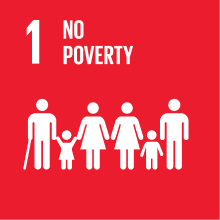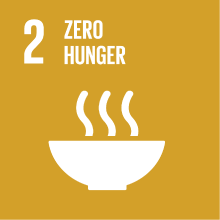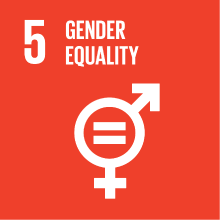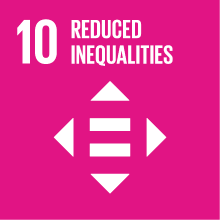HISPANIC AMERICAN LITERATURE 1/2
- Academic year
- 2025/2026 Syllabus of previous years
- Official course title
- LITERATURA HISPANOAMERICANA 1/2
- Course code
- LMI02Q (AF:559927 AR:321761)
- Teaching language
- Spagnolo
- Modality
- On campus classes
- ECTS credits
- 6 out of 12 of HISPANIC AMERICAN LITERATURE 1
- Degree level
- Master's Degree Programme (DM270)
- Academic Discipline
- L-LIN/06
- Period
- 1st Semester
- Course year
- 1
- Where
- VENEZIA
- Moodle
- Go to Moodle page
Contribution of the course to the overall degree programme goals
The course aims to deepen the knowledge of cultural themes and dynamics related to the figure of the witch in Hispanic-American literature of the 20th and 21st centuries.
Objectives of the course are: to deepen the specifics of cultural themes and dynamics of the Hispano-American subcontinent; provide methodological tools aimed at analyzing the Chilean and Argentine literary productions of the last decade, develop the ability to reflect on the proposed literary texts and carry out comparative analyzes.
Expected learning outcomes
a. knowledge of the Hispanic-American productions of the 20th and 21st centuries, built around the figure of the witch and the re-semanticization of the imagery and symbolism linked to it, in a comparative perspective
b. knowledge of interdisciplinary analysis tools: paradigms derived from gender studies, historical, anthropological and theoretical-literary studies.
c. knowledge in the historical-literary field: textual statutes of the texts analyzed in relation to the historical-social context of production.
d. develop the ability to reflect on the proposed texts, recognizing in them the use of different ways of writing and registers, such as the fantastic way of writing, the mimetic, the unusual, local and colloquial registers
e. develop theoretical tools for analyzing the variations that the figure of the witch assumes in different literary productions, as well as the category of monstrosity linked to it.
2. Applied knowledge and understanding:
a. apply the knowledge acquired to the texts selected among the most important expressions of Hispanic America of the twentieth century, ability to analyze and comment on the texts from a cultural and literary-critical point of view in their original elaboration in Spanish
b. ability to analyze and compare texts and to elaborate conceptual syntheses;
c. ability to place a text and a literary phenomenon in their context of production and reception
3. Autonomy of judgment: strengthen the exercise of critical thinking and the ability to formulate autonomous hypotheses and judgments argued in a coherent and effective manner, also through the development of a thesis on a topic of your choice.
4. Communication skills: development of communication skills aimed at a coherent, clear, terminologically precise and effective exposition, both in oral interaction in class on topics related to the course and in academic written discourse (development of a thesis).
5. Learning ability: ability to infer, relate data, summarize, organize the coherent and autonomous analysis of a text and/or a literary process.
Pre-requirements
Contents
The course aims to provide a comparative overview of contemporary (20th century) and ultra-contemporary (21st century) Hispanic-American literary productions which are created around the figure of the witch and its re-semanticization. Different declinations of the image of the witch will be investigated, as well as the monstrous and counter-hegemonic nuances that the character represents.
The course will be divided into two main parts:
1. In the first part, students will be provided with a theoretical framework of the different symbolic meanings that the imagery related to the witch and magic has assumed throughout history and literature; in this sense, reference will also be made to the main declinations of the literary theme of the witch in other literary productions. Furthermore, the symbolisms related to fire and the concept of scapegoat will be explored.
2. In the second part, the texts indicated in the minimum bibliography will be analyzed, which allows a transversal view of the productions of classic Hispanic-American authors of the 20th century and the literary productions of the 21st century.
At this stage, students will also be invited to choose one or more of the proposed themes and develop a presentation in class.
Referral texts
-Lydia Cabrera, “El sapo guardiero”, Cuentos negros de Cuba (1940)
-Julio Cortázar, “Bruja”, La otra orilla ([1937-1945]1994)
____________ “Circe”, Bestiario (1951)
-Carlos Fuentes, Aura (1962) nouvelle
-Silvina Ocampo, “La muñeca”, Los días de la noche (1970)
______________ “La casa de azúcar”, La Furia y otros cuentos (1982)
-Elaine Vilar Madruga, Díme bruja que destellas (2013) cuentos
-Mariana Enríquez, “Las cosas que perdimos en el fuego”, Volumen homónimo (2016)
_______________ “El aljibe”, Los peligros de fumar en la cama (2017)
-Fernanda Melchor, Temporada de huracanes (2017) novela
-Dolores Reyes, Cometierra (2019) novela
-Brenda Lozano, Brujas (2020) novela
-Mónica Ojeda, “Las voladoras”, Las voladoras (2020)
_____________ “Tinta de sangre”, Las voladoras (2020)
_____________ “Cabeza voladora”, Las voladoras (2020)
-Solange Rodríguez Pappe, “Historia incómoda que nos contó Olivia el día de su cumpleaños”, La primera vez que vi un fantasma (2020)
_____________________ “El atanudos”, La primera vez que vi un fantasma (2020)
The short stories listed in the minimum bibliography, as well as the articles in the critical bibliography, will be provided among the moodle materials. As for the novels, however, students will have to provide them independently.
To view the complete bibliography (Minimum, Critical and Support) please refer to the Moodle page of the course.
Assessment methods
Type of exam
Grading scale
1) knowledge of the topics covered in class and in the bibliography (range 10 points)
2) ability to hierarchize information (range 10 points)
3) use of the appropriate specific terminology (range 10 points)
Honors will be awarded in the presence of knowledge and ability to understand applied in reference to the program, ability to formulate judgments, relevant autonomy and communication skills, excellent.
The class presentation will be evaluated taking into account the criteria described above and will constitute 30% of the overall grade.
Teaching methods
Students will also be invited to choose one of the proposed themes and develop a presentation in the classroom using the theoretical tools presented and the proposed bibliography. The presentation will correspond to 30% of the final grade.
The exam will consist of an oral interview in Spanish on the authors, the texts and the issues considered in the classroom.
Further information
Moreover, every student is recommended to follow additional lessons and round-table conferences that may be held between September and December 2025.
2030 Agenda for Sustainable Development Goals
This subject deals with topics related to the macro-area "Poverty and inequalities" and contributes to the achievement of one or more goals of U. N. Agenda for Sustainable Development




